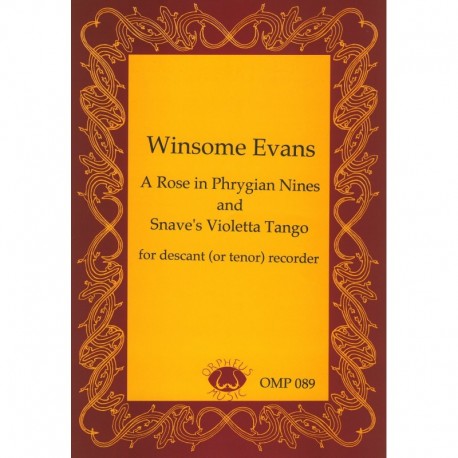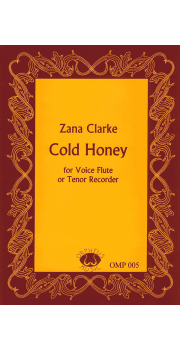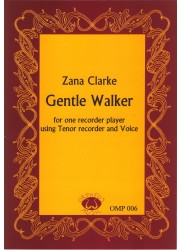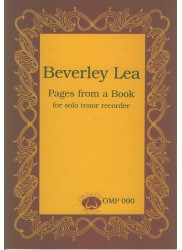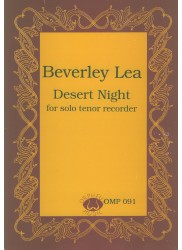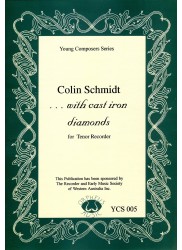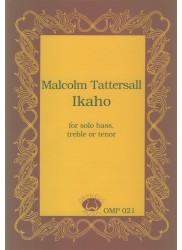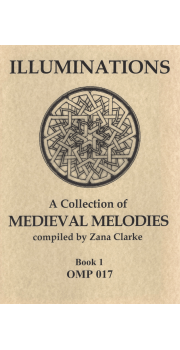No products
Prices are tax included
A Rose in Phrygian Nines and Snave's Violetta Tango
Composer: Evans - Winsome
Instrumentation: Descant/Tenor
Period/genre: Australian Contemporary
Grade: Difficult - Very Difficult
More info
*Contemporary Pieces.* Two lively and rhythmic pieces with amusing ornamented melodies.
1. A Rose in Phrygian Nines
2. Snave's Violetta Tango
_Trinity London 2017-2020 Descant Recorder Syllabus Grade 8 Group B_
_Part 3 pp._
OMP085 Robert Allworth How many sunsets will I see? and A meditation of Saint Clare
OMP089 Winsome Evans A Rose in Phrygian Nines and Snave's Violetta Tango
YCS011 Nicholas Ng Poppies and Spice
Orpheus Music is a small company created to produce and distribute editions of Australian recorder music while allowing the composers to retain copyright. Though it has not been directly stated, the company seems to have a clear aesthetic direction that I would describe as multicultural eclecticism with a touch of New Age coolness. As diverse as they may be, each of the pieces in these three editions typifies that aesthetic ideal in its own way.
Least interesting are the two compositions by Robert Allworth. How many sunsets will I see? for alto recorder and mandolin strikes me as having a most ironic title for such a dry fusion of 12-tone language and low key New Age aesthetic. His brief solo alto piece, A meditation of Saint Clare is better - it has an attractively-haunting quality.
Far more engaging are the two solo soprano works by Winsome Evans. A Rose in Phrygian Nines is, as you might expect, a composition based on the Phrygian mode. That particular modality, as well as its fast, invigorating 7/8 meter, give it an Eastern European feel, although Evans uses ornamentation that seems to be a mixture of Baroque and Irish! The form of the piece might be described as variational, but it is closer to written-out improvisation. Snave's Violetta Tango is similar in design and style. Its tempo is slower and it's in 8/8 meter grouped 3+3+2. Somehow, a most unlikely and delightful tango feel projects through the music.
Nicholas Ng's Poppies and Spice for tenor and guitar is the most appealing of these works. It is inspired by the history of the Chinese community in Darwin (Northern Territory), which is described in the edition's preface. Ng's melodic idiom is European-rooted, but with many turns of both phrase and ornamentation that take their inspiration from Chinese and Japanese models. There are occasional references, as well, to the droning sound of the didgeridoo - sometimes described as the Australian aboriginal trumpet. Both parts are meticulously written. Visually they may appear to be simple, but when heard together they reveal an amazing sophistication. The end result is quite beautiful.
These editions are generally excellent though there are bad page turns in both the score and recorder part of Poppies and Spice. They are suited to advanced players.
Pete Rose, American Recorder, March 2003
17 other products in the same category:
Reference: OMP005
Brand: Orpheus Music
Cold Honey
Composer: Clarke - Zana Instrumentation: Tenor Period/genre: Australian...
In StockReference: OMP005.pdf
Brand: Orpheus Music
Cold Honey
PLEASE NOTE - DOWNLOADABLE PDF VERSION Composer: Clarke - Zana...
$13.00 -20%In StockReference: OMP006
Brand: Orpheus Music
Gentle Walker
Composer: Clarke - Zana Instrumentation: Tenor - Voice - one player...
In StockReference: OMP006.pdf
Brand: Orpheus Music
Gentle Walker
PLEASE NOTE - DOWNLOADABLE PDF VERSION Composer: Clarke - Zana...
$14.50 -20%In StockReference: OMP074
Brand: Orpheus Music
Two Responses to Silence
Composer: Bousted - Donald Instrumentation: Tenor Period/genre:...
In StockReference: OMP089.pdf
Brand: Orpheus Music
A Rose in Phrygian Nines and Snave's Violetta Tango
PLEASE NOTE - DOWNLOADABLE PDF VERSION Composer: Evans - Winsome...
$13.00 -20%In StockReference: OMP090
Brand: Orpheus Music
Pages from a Book
Composer: Lea - Beverley Instrumentation: Tenor Period/genre: Australian...
In StockReference: OMP090.pdf
Brand: Orpheus Music
Pages from a Book
PLEASE NOTE - DOWNLOADABLE PDF VERSION Composer: Lea - Beverley...
$13.00 -20%In StockReference: OMP091
Brand: Orpheus Music
Desert Night
Composer: Lea - Beverley Instrumentation: Tenor Period/genre: Australian...
In StockReference: OMP091.pdf
Brand: Orpheus Music
Desert Night
PLEASE NOTE - DOWNLOADABLE PDF VERSION Composer: Lea - Beverley...
$14.50 -20%In StockReference: YCS005
Brand: Orpheus Music
With cast iron Diamonds
Composer: Schmidt - Colin Instrumentation: Tenor Period/genre: Contemporary...
In StockReference: YCS005.pdf
Brand: Orpheus Music
With cast iron Diamonds
PLEASE NOTE - DOWNLOADABLE PDF VERSION Composer: Schmidt - Colin...
$13.00 -20%In StockReference: OMP021
Brand: Orpheus Music
Ikaho
Composer: Tattersall - Malcolm Instrumentation: Tenor - Bass Period/genre:...
In StockReference: OMP021.pdf
Brand: Orpheus Music
Ikaho
PLEASE NOTE - DOWNLOADABLE PDF VERSION Composer: Tattersall - Malcolm...
$14.50 -20%In StockReference: OMP017
Brand: Orpheus Music
Illuminations Vol 1
Composer: Clarke - Zana Instrumentation: Descant/Treble/Tenor - solos and...
In StockReference: OMP017.pdf
Brand: Orpheus Music
Illuminations Vol 1
Composer: Clarke - Zana Instrumentation: Descant/Treble/Tenor - solos and...
$23.50 -20%In StockReference: OMP074.pdf
Brand: Orpheus Music
Two Responses to Silence
Composer: Bousted - Donald Instrumentation: Tenor Period/genre:...
$13.00 -20%In Stock

